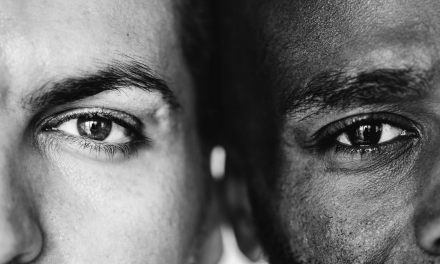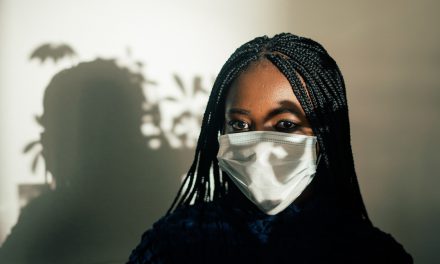While society is vastly patriarchal and affords privileges to men that are refused to women, men statistically have worse health outcomes than their female counterparts. Concerns for male aging usually center on loss of libido when, in reality, men experience a host of other symptoms that dampen their quality of life. However, when researching the conditions of older men, search results yield the question of whether or not andropause (known as male menopause) is actually real.
Male menopause is a common term for andropause and hypogonadism, but it is not the same as the hormonal changes that women experience as they age. In menopause, the hormone levels in women drop suddenly. Women usually experience an 80% decrease in sex hormones during their first year of menopause, triggering hot flashes, mood swings, osteoporosis, and other ailments. Male hormone levels, on the other hand, drop gradually over the course of several years. Andropause is the age-related changes that happen in a man’s body, and is controlled by the group of hormones called androgens. When men experience a deficiency of these hormones, or suffer from hypogonadism (the broad term for the lack of sex hormone production), the onset of andropause is the result. Andropause initiates physical, mental, and emotional changes in men aged 50 and older.
The function of testosterone in the male body goes far beyond libido, and it is a type of androgen. For men, testosterone kickstarts the changes they experience during puberty and supports their mental and physical energy, bone and muscle mass retention, hyperarousal (fight or flight response), and red blood cell and sperm production. Other types of androgens, such as androstenedione, dihydrotestosterone (DHT), and dehydroepiandrosterone affect bone and muscle development. Additionally, androgens are responsible for typical characteristics in men, including facial and body hair and voice change. When the volume of androgens coursing throughout the body is either too low or too high, health problems arise.
According to the Mayo Clinic, men’s testosterone levels drop one percent per year after the age of 30, and some preexisting health conditions can exacerbate this number. Andropause presents itself with a host of varying symptoms:
- low energy
- depression or sadness
- decreased motivation
- lowered self-confidence
- difficulty concentrating
- insomnia or difficulty sleeping
- increased body fat
- reduced muscle mass and feelings of physical weakness
- gynecomastia, or development of breasts
- decreased bone density
- erectile dysfunction
- hair loss
- infertility
- hot flashes
While not all men experience andropause, the NIH reports that low testosterone affects 20% of men in their 60s, 30% of men in their 70s, and over 50% of men in their 80s. However, there is a chance that cases of andropause are overlooked and underdiagnosed. This is due to three main factors, including men’s unwillingness to visit the doctor, men’s hesitation with being open with their doctor, and doctors not being as thorough and attentive in their appointments with men as they are with women.
When men do seek medical advice, they are often given fewer explanations for their ailing health and participate in less discussion about high risk behaviors (such as smoking and drinking), even though they are statistically more likely to partake in these habits. Additionally, men are more reluctant to schedule regular visits with their doctors.
The Cleveland Clinic reports that nearly 60% of men don’t go to the doctor unless they present symptoms that they can no longer ignore. Similarly, the Centers for Disease Control and Prevention (CDC) report that women are 100% more likely to schedule preventative care appointments. Men who do schedule regular doctor’s visits aren’t always completely honest about the symptoms they experience or the concerns that they have, due to embarrassment, fear, or nonchalance. Lastly, men with low androgen levels might not exhibit obvious symptoms of the condition, or the symptoms present are sporadic and nonspecific.
Thus, while only 3-7% of men are reported to suffer from hypogonadism, there is a chance that the condition is underdiagnosed. Andropause is the forebearer of ailments in many aging men; however, depression, hypothyroidism, chronic alcoholism, and use of medications such as corticosteroids, cimetidine, spironolactone, digoxin, opioid analgesics, antidepressants, and antifungal agents might all create similar challenges in men, according to the NIH. These issues must all be ruled out before an accurate diagnosis is made.
Andropause is diagnosed via blood test and, unlike women who are prescribed hormone replacement therapy (HRT) to cope with menopause, its most common treatment is healthy eating, exercise, adequate sleep, and stress reduction. For men who are experiencing depression, doctors may prescribe antidepressant medication and therapy. Common comorbidities of andropause include metabolic syndrome, diabetes, and cardiovascular disorders. Therefore, lifestyle changes will help manage these conditions as well. Male HRT is controversial because synthetic testosterone may have dangerous side effects that include the production of cancerous cells within the prostate and cardiovascular complications, such as heart attack and stroke. For some men, the benefits of HRT outweigh the risks, but the decision ultimately rests between patient and doctor.
Male quality of life throughout the aging process could be vastly improved if the realities concerning men’s health were more transparent and talked about in the open. Additionally, men should feel confident in the doctor’s office so that they receive comprehensive care. This is achieved through the relay of information and education by doctors and care providers, and cooperation and honesty from the male patient. While men’s health isn’t always a hot topic, the discussion is valuable and could save the lives of fathers, sons, brothers, husbands, and uncles.








